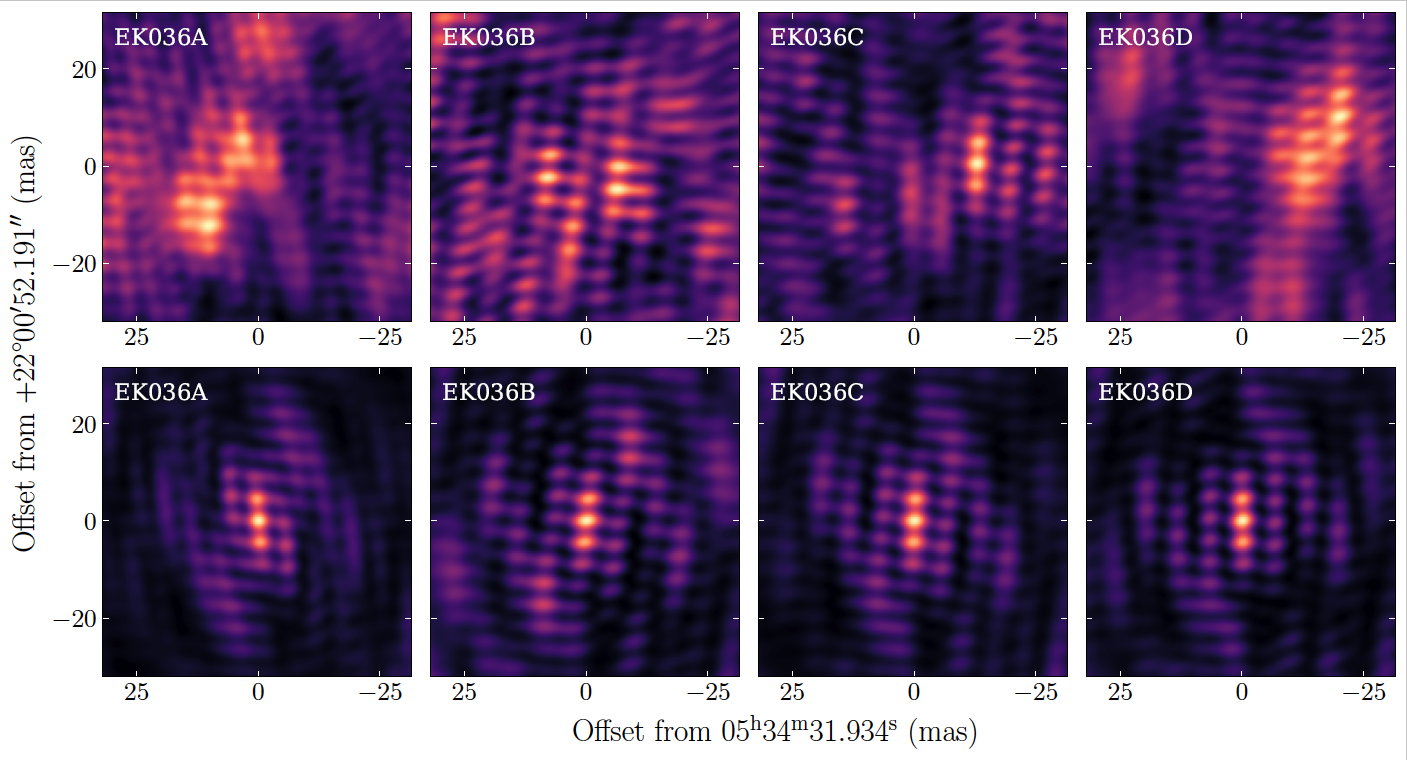
The Radio Parallax of the Crab Pulsar: A First VLBI Measurement Calibrated with Giant Pulses
REBECCA LIN, MARTEN H. VAN KERKWIJK, FRANZ KIRSTEN, UE-LI PEN, AND ADAM T. DELLER
The Crab Pulsar is one of the most intensely studied pulsars and serves as a key testing ground for theories surrounding pulsar emissions. Given its significance in the field of pulsar astronomy, obtaining a precise distance measurement for the Crab is crucial. We measured the radio parallax and proper motion of the Crab Pulsar using four high-resolution EVN observations taken over two years. Precision VLBI astrometry of the Crab faces many hurdles. The pulsar is embedded in a large ∼6′×4′ radio-bright nebula which significantly contributes to the system temperature of any radio telescope. Since the spectral index of the pulsar’s radio emission is steeper than that of the surrounding nebula, higher frequency observations (which would provide better angular resolution) suffer from a low signaltonoise ratio. Thus, the observations were conducted at ∼ 1.66 GHz. Due to stronger ionospheric effects at these low frequencies, extragalactic background sources must be as close as possible to the Crab, while being outside the nebula, to avoid being scatterbroadened by ∼60 mas. While none were known at the time of observation, two sources satisfying these requirements were found in the dataset upon later analysis, with one bright enough to be used as a reference for precision astrometry.
In the standard calibration pipeline, a very bright calibrator source close to the target is observed regularly to determine fringe solutions (i.e., correcting for delays and phases between the antennas of the array). These solutions are then transferred to the observations of the target source for calibration. For observations of the Crab, this conventional method performs very poorly. The best calibrator source is too far from the Crab, and the relative phases between antennae change too rapidly for fringe solutions to be transferred from the out-of-beam calibrator. This is further exacerbated by the large East-West baselines required to resolve the motion of the Crab in the sky. Fortunately, the radio emission of the Crab Pulsar largely consists of “giant pulses”, which are well-suited for calibrating VLBI arrays due to their extremely high peak brightness. On average, we detect ∼ 4− 11 sufficiently bright giant pulses every minute. Thus, we can precisely generate fringe solutions at high time resolution using the Crab’s emission, i.e. we effectively perform self-calibration on the source itself and fix its position in R.A. and Decl. We subsequently measure the apparent parallax and proper motion of the extragalactic in-beam calibrators. In Figure 1, we show the difference between dirty images of the Crab Pulsar generated using the standard calibration technique (top panels) and ours using giant pulses (bottom panels).
Our technique greatly improved the sensitivity and reliability of the interferometric images and allowed us to determine precise positions of the pulsar relative to the reference source. We measure a parallax of π = 0.53 ± 0.06 mas and proper motion of (μα, μδ) = −11.34±0.06, 2.65±0.14) mas yr−1, yielding a distance of d = 1.90+0.22 −0.18 kpc and transverse velocity of v⊥ = 104+13 −11 km s−1. These results are consistent with Gaia DR3 measurements, and our technique opens up the possibility of far more accurate astrometry in future VLBI observations.

Published in https://iopscience.iop.org/article/10.3847/1538-4357/acdc98.